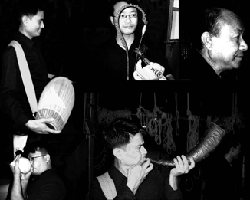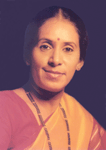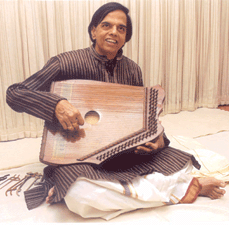NEWS & NOTES

Why Have a Festival of Silence? -NEERJA DASANI & KRISH RAGHAV
At the end of the eleven-day theatrical journey offered us by the MetroPlus Theatre Fest (2nd to 12th August) in Chennai, we find ourselves questioning the nature of our experience. Though the bouquet (“buffet” according to the MC) of twelve plays did set us thinking, stimulating new ideas, we were unprepared for the post-performance silence and the vacuity of debate / discussion within which the festival was conducted.
Theatre depends for its energy on the chemistry between the actors and the audiences. A play does not cease to exist at the end of the performance; it continues to play with our minds long after the curtain falls. In that sense, theatre is a shared community experience and uniquely provides a space where the barriers between artists and audiences can be minimised. As such, it is an important element in civil society. It helps us analyse the role of language, even while challenging words through the power of silence. At a time when space for critical discourse in the public sphere seems to have shrunk, theatre offers us the opportunity to discuss, debate and respond to our world in ways we usually do not do.
COVER STORY

Mrinalini Sarabhai She brought South Indian classical dance to Ahmedabad -SAPNA RANGASWAMY
The Sruti Foundation will honour Mrinalini Sarabhai, famous dance exponent and guru, and Founder-Director of the Darpana Academy of Performing Arts, Ahemedabad, with the E. Krishna Iyer Medal on 4th November in Chennai. The Association of Bharatanatyam Artistes of India (ABHAI) is conferring the title Natya Kalanidhi on her on 3rd November. Sruti presents a cover story on this veteran artist. Maharaja Sayajirao Gaekwad married a princess of Tanjavur in 1883 and she brought Bharatanatyam to Baroda. In 1942, the prince of Ahmedabad married a princess of Kerala and she brought Bharatanatyam and Kathakali to Ahmedabad. The prince was India’s space scientist Vikram Sarabhai, son of Sarlaben and Ambalal Sarabhai. The princess was Mrinalini Swaminadhan, daughter of Ammu and Subbarama Swaminadhan.
Mrinalini’s mother sent her to a teacher called Louise Lightfoot to learn dance, Mrinalini’s interest in dance lay elsewhere. Ammu then arranged for her to go to Kalakshetra. Mrinalini’s dance journey had begun.
At Kalakshetra, Mrinalini was initiated into dance by Kattumannarkoil Muthukumara Pillai. After learning Bharatnatyam for a year at Kalakshetra, Mrinalini went to Shantiniketan near Calcutta in 1937 where she studied Kathakali from Kelu Nair and Manipuri from Guru Amubi Singh. While she was still there, she learnt from her friend Nina Thimayya that Ramgopal, by then a famous dancer, wished to have Mrinalini as his dance partner. It was a good beginning for young Mrinalini.
Though Ramgopal was extremely kind and affectionate towards Mrinalini, she always felt that their under-standing of art was quite different. For her, dance was divine and for him it was a profession. Mrinalini says, in her autobiography, “Another thing that shocked me was Ram’s attitude on stage. While I was completely absorbed when dancing, Ram often talked all through the performance making uncharitable remarks about the audience…. Ram’s flippant attitude was the real reason for my leaving him….”
MAIN FEATURE

Vijaya Jadhav-Gatlewar A classicist in a romanticist world Deepak -S. RAJA
Does classicism have a chance in a musical culture under the spell of romanticism? This is the question surrounding the musicianship of Vijaya Jadhav-Gatlewar (born: 1955). Vijaya is an orthodox musician steeped in the traditional values of the khayal genre, represented by its architectural formalism as well as aloofness of demeanour. Her music qualifies her as an exponent of orthodox Jaipur-Atrauli vocalism. But her grooming has not left her music untouched by other influences, as neither of her two guru-s could claim exclusive grooming in the gharana. Vijaya was first trained by her father, D.B. Jadhav, and later by Nivrutti Buwa Sarnaik. Her tutelage with Sarnaik included a fifteen-year apprenticeship at the ITC-Sangeet Research Academy in Kolkata.
Vijaya is an “A” grade artist of the All India Radio, and a respected teacher, with a concert presence that is growing slowly, though steadily.
Conservatory grooming
(Vijaya spoke to the author in December 2001)
“My father, D.B. Jadhav, a clerk in a Bombay textile mill, was an empanelled vocalist of All India Radio. He studied primarily with Natthan Khan (died: 1946), the nephew of Alladiya Khan of the Jaipur gharana. However, he also studied with senior musicians of the Agra and Gwalior gharana-s. Despite his diverse training, he performed in the Jaipur style. Once he came home from work, our home had only music, nothing else. He had two or three disciples who trained with him every evening from 6 to 9 pm. I overheard these lessons, and unknown to my father, started singing. It was only when I opted for music as a subject for my high school graduation that he discovered my talent. Thereafter, he took my training seriously. I became a permanent fixture of his evening sessions with his disciples.
OBITUARY

R. Visweswaran: Bridging the North-South divide
-S. JANAKI
Music was his passion, so he opted to make it his profession. Music to him was an elixir which, combined with his unswerving faith in his spiritual guru Mataji Vithamma, brought him back from the jaws of death time and again.
R. Visweswaran was totally immersed in music. This multi-talented artist was adept at playing Carnatic music on the veena, Western classical music on the Flamenco guitar, BGM for films, and Hindustani music on the santoor, composed music for dance and strummed on the surmandal as he sang for his wife Chitra’s Bharatanatyam recitals.
Born on 9th May 1944, Viswes or Vichechu as he was affectionately called, belonged to a family steeped in music. He was the nephew of the legendary GNB and the son of R. Ranganathan who served the Madras Music Academy as its secretary for many years. Even as a child he had an instinctive feel for music. He learnt Carnatic vocal music from mother Rajeswari, veena from vidwan Pichumani Iyer, and went on to equip himself as a licentiate in teaching in Western classical guitar from the Trinity College, London. He had specialised training in padam-singing from T. Muktha.


